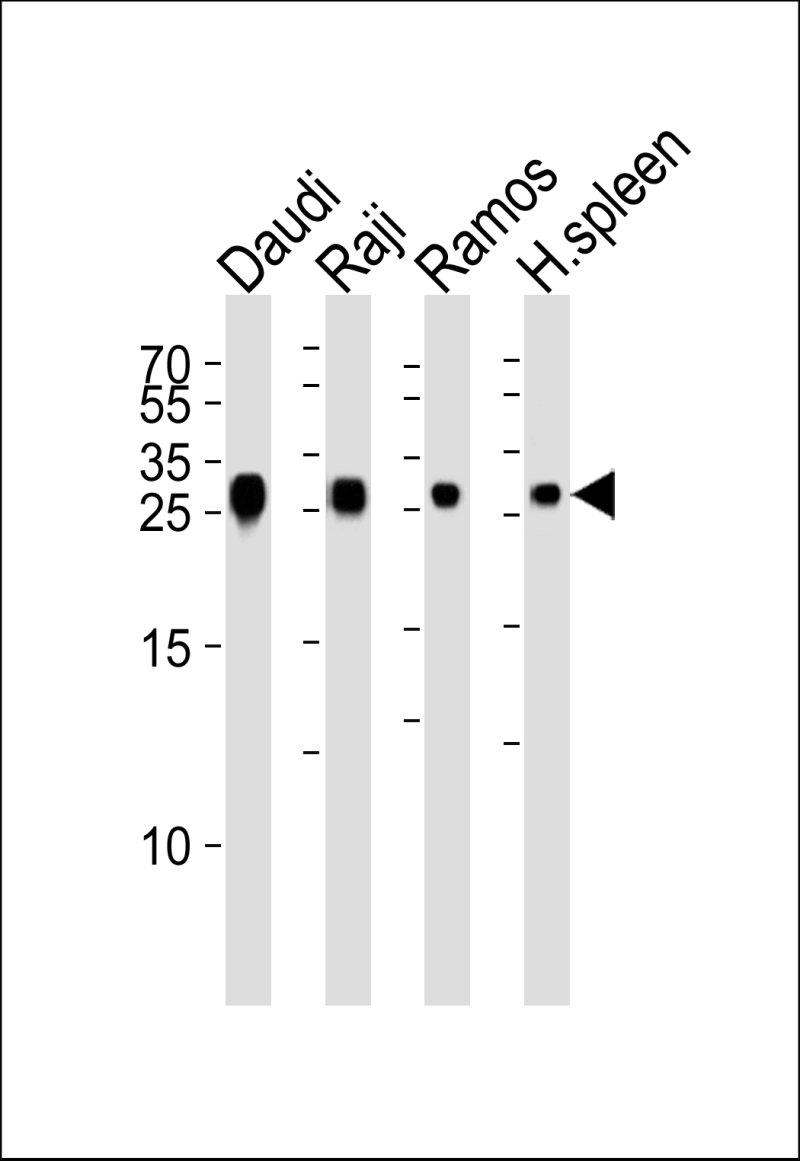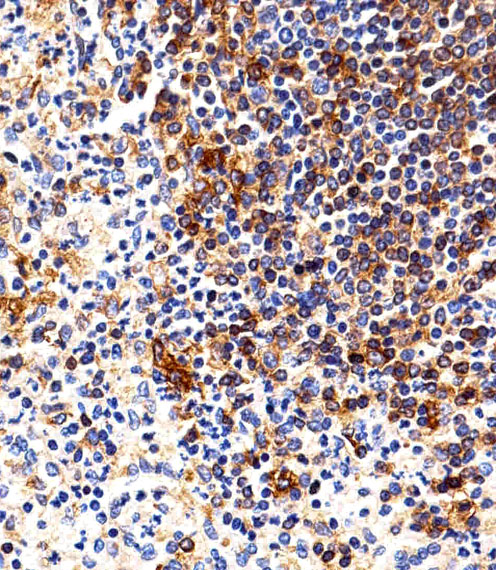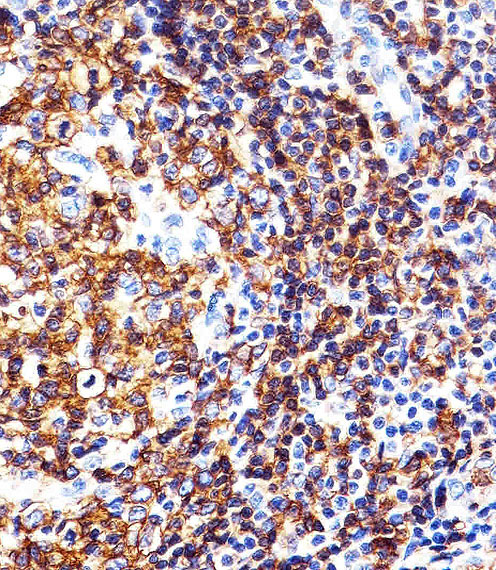


| WB | 咨询技术 | Human,Mouse,Rat |
| IF | 咨询技术 | Human,Mouse,Rat |
| IHC | 咨询技术 | Human,Mouse,Rat |
| ICC | 技术咨询 | Human,Mouse,Rat |
| FCM | 咨询技术 | Human,Mouse,Rat |
| Elisa | 1/2000-1/5000 | Human,Mouse,Rat |
| Aliases | HLA class II histocompatibility antigen, DRB1-1 beta chain, MHC class II antigen DRB1*1, DR-1, DR1, HLA-DRB1 |
| Host/Isotype | Rabbit IgG |
| Antibody Type | Primary antibody |
| Storage | Store at 4°C short term. Aliquot and store at -20°C long term. Avoid freeze/thaw cycles. |
| Species Reactivity | Human |
| Immunogen | This HLA-DRB1 antibody is generated from a rabbit immunized with a KLH conjugated synthetic peptide between 103-137 amino acids from the Central region of human HLA-DRB1. |
+ +
以下是关于NKX2-1抗体的3篇代表性文献示例(仅供参考,建议通过学术数据库核实最新研究):
---
1. **文献名称**:*"TTF-1 (NKX2-1) as a Marker for Lung Adenocarcinoma: Diagnostic Utility in Cytologic and Histologic Samples"*
**作者**:Pelosi G, et al.
**摘要**:该研究评估了TTF-1(NKX2-1)抗体在肺腺癌诊断中的应用,证实其在细胞学和组织学样本中具有高特异性,可作为区分肺腺癌与其他恶性肿瘤的关键标志物。
2. **文献名称**:*"NKX2-1/TTF-1 in Thyroid Development and Disease: From Bench to Bedside"*
**作者**:De Felice M, Di Lauro R.
**摘要**:综述了NKX2-1在甲状腺发育中的调控机制及其抗体在甲状腺癌和先天性甲状腺疾病(如脑-肺-甲状腺综合征)诊断中的临床价值。
3. **文献名称**:*"Comparative Analysis of NKX2-1 Antibody Clones in Pulmonary Neuroendocrine Tumors"*
**作者**:Böhm J, et al.
**摘要**:比较了不同克隆号(如8G7G3/1、SPT24)的NKX2-1抗体在神经内分泌肿瘤中的染色性能,发现克隆选择显著影响检测敏感性和特异性。
---
**备注**:以上文献为示例性质,实际引用时请通过PubMed、Google Scholar等平台检索最新研究,并核对作者、标题及摘要的准确性。
NKX2-1 antibody targets the NKX2-1 protein, also known as thyroid transcription factor-1 (TTF-1), a member of the NKX2 homeobox transcription factor family. Encoded by the NKX2-1 gene, this protein plays a critical role in embryonic development, particularly in the thyroid, lung, and ventral forebrain. In adults, it regulates gene expression in thyroid follicular cells, alveolar epithelial cells, and specific brain regions.
NKX2-1 antibodies are widely used in diagnostic and research settings to identify tissues or tumors expressing this marker. In pathology, NKX2-1 immunostaining helps differentiate lung adenocarcinomas (often positive) from squamous cell carcinomas (typically negative) and identifies thyroid-derived malignancies. It also serves as a biomarker for certain brain tumors and metastatic cancers of unknown origin.
However, NKX2-1 expression is not exclusive to malignancies; it is also detected in benign tissues, necessitating careful interpretation. Aberrant expression in rare tumors, like NUT carcinoma or a subset of neuroendocrine tumors, adds diagnostic complexity. Commercially available clones (e.g., SPT24. 8G7G3/1) vary in specificity, and staining protocols (e.g., fixation methods) may influence results. Research applications include studying lung development, thyroid dysfunction, and neurological disorders linked to NKX2-1 mutations. Despite its utility, overlapping expression patterns and technical variability underscore the need for complementary diagnostic approaches.
×